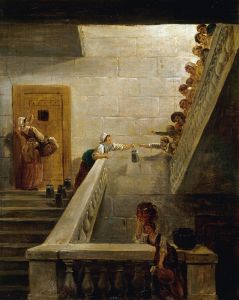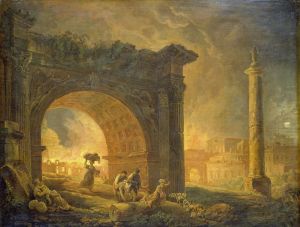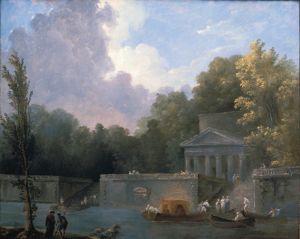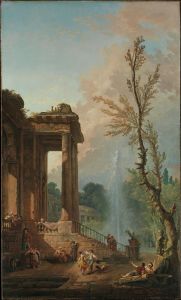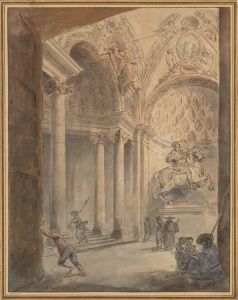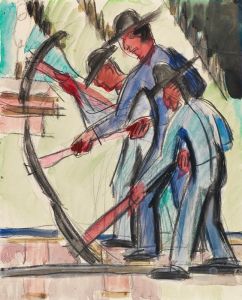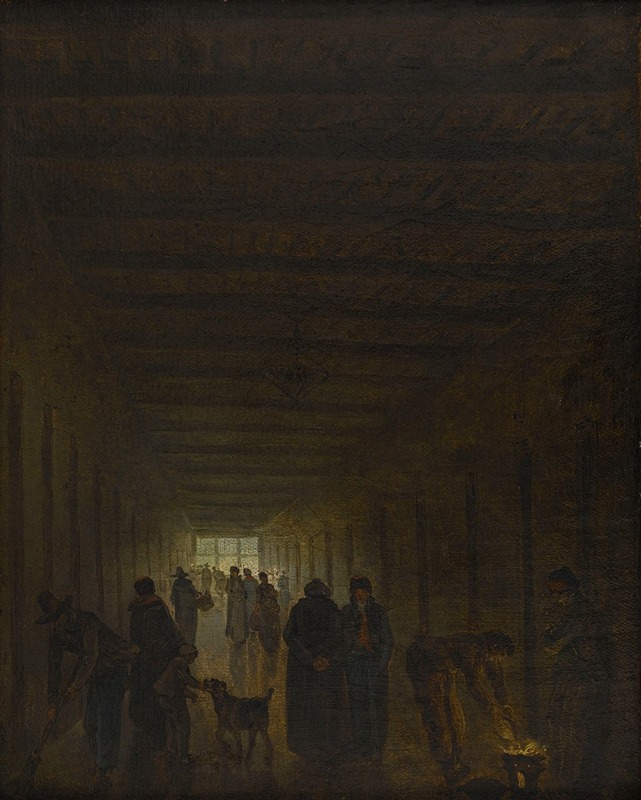
Corridor de la prison Saint-Lazare
A hand-painted replica of Hubert Robert’s masterpiece Corridor de la prison Saint-Lazare, meticulously crafted by professional artists to capture the true essence of the original. Each piece is created with museum-quality canvas and rare mineral pigments, carefully painted by experienced artists with delicate brushstrokes and rich, layered colors to perfectly recreate the texture of the original artwork. Unlike machine-printed reproductions, this hand-painted version brings the painting to life, infused with the artist’s emotions and skill in every stroke. Whether for personal collection or home decoration, it instantly elevates the artistic atmosphere of any space.
Corridor de la prison Saint-Lazare is a painting by the French artist Hubert Robert, created in the late 18th century. The work depicts the interior of the Saint-Lazare prison in Paris, showcasing a corridor with arched ceilings and a dimly lit atmosphere. The painting is notable for its dramatic use of light and shadow, which emphasizes the architectural features of the prison and evokes a sense of confinement and solemnity.
Hubert Robert (1733–1808) was a prominent painter of the French Enlightenment period, known for his landscapes, architectural capriccios, and depictions of ruins. His works often combined real and imagined elements, reflecting his fascination with the passage of time and the grandeur of architectural spaces. While Robert is best known for his romanticized portrayals of ruins and pastoral scenes, Corridor de la prison Saint-Lazare stands out as a more somber and realistic representation of a specific location.
The Saint-Lazare prison, originally a leper hospital in the 12th century, was repurposed as a prison in the 17th century. By the time Robert painted this work, the prison had become one of the most infamous detention centers in Paris, housing a wide range of inmates, including political prisoners, debtors, and criminals. The prison gained further notoriety during the French Revolution, when it was used to detain individuals accused of counter-revolutionary activities.
The painting captures the stark and oppressive environment of the prison, with its long, narrow corridor and heavy stone walls. The figures in the scene, though not highly detailed, add a human element to the composition, suggesting the presence of prisoners or guards. The subdued color palette and careful attention to architectural detail contribute to the overall mood of desolation and introspection.
Corridor de la prison Saint-Lazare is an example of Robert's ability to convey emotion through architectural spaces. The painting reflects his interest in exploring the interplay between light, shadow, and structure, as well as his skill in creating atmospheric effects. While the exact circumstances of the painting's creation are not well-documented, it is consistent with Robert's broader body of work, which often sought to evoke a sense of history and the human experience within built environments.
Today, the painting is recognized as an important piece within Robert's oeuvre, offering insight into both his artistic approach and the historical context of late 18th-century France. It serves as a poignant reminder of the harsh realities of life within the Saint-Lazare prison and the broader social and political upheavals of the era.







